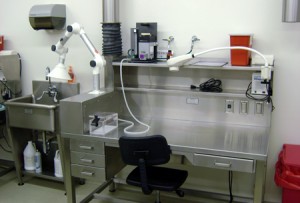- Homepage
- Departments
- Research Safety & Services
- Animal Research Safety
- Inhalation Anesthetic Gases and Compressed Cylinders
Inhalation Anesthetic Gases and Compressed Cylinders
- Pest Management
- Fire Plan Review and Inspection
- Building Codes Enforcement
- ADA Assessment
- Applicable Building Codes
- Building Emergency Coordinators
- Certificate of Completion or Occupancy
- Chartfield Form Codes Permits
- Inspections
- Permit Application Process
- PERMIT APPLICATIONS AND FORMS
- Permit Fee Schedule
- Permit Instructions
- Plan Submittal Guidelines
- Temporary Structures on Campus – Including Tents
- Insurance and Risk Management
- Occupational Medicine
- Industrial Hygiene & Occupational Safety
- Ergonomics
- Camps
- Drones/UAS
- Building and Contents
- Boating & Dive Safety
- Automobile
- Report Lab Closeout
- Radiation Safety
- Hazardous Waste Management
- Chemical and Lab Safety
- Standard Operating Procedures
- Safety Surveys
- Peroxide Forming Compounds
- New Labs, Moving Labs & Closeouts
- Nanoparticles
- Minors and Visitors in the Lab
- Lessons Learned
- Lab Ventilation
- Lab Signage
- Lab Safety Manual
- Hydrofluoric Acid
- Greenhouse Safety
- First Aid Kit Info
- Equipment Purchase Approval
- Equipment Decontamination
- DEA – Controlled Substances
- DBPR – Pharmaceutical Products
- Cryogens
- Compressed Gas
- Chemical Storage and Management
- Chemical Spills
- Chemical Safety Information
- Chemical Inventory
- Chemical Hygiene Plan
- Chemical Exposures
- Acids That Deserve Special Attention
- Biological Safety
- Vaccination Policy for Research Personnel
- Shipping and Transport of Biological Materials
- Select Agents
- Research Involving Flying Insects
- Recombinant & Synthetic Nucleic Acids
- Plant Research
- NIH Guidelines Flowchart
- BloodBorne Pathogen Program
- Biohazardous Waste Disposal
- Biohazard Project Registration
- Autoclaves
- Acute Biological Toxins
- Lab Safety & Research Services
- Clinic Safety
- Chemical Safety
- Animal Research Safety
 Waste anesthetic gases (WAGs) are volatile anesthetic gases (e.g., isoflurane, nitrous oxide, desflurane, and sevoflurane) used during a medical or surgical procedure to alleviate pain and/or distress. Exposure to WAGs may result in adverse health effects.
Waste anesthetic gases (WAGs) are volatile anesthetic gases (e.g., isoflurane, nitrous oxide, desflurane, and sevoflurane) used during a medical or surgical procedure to alleviate pain and/or distress. Exposure to WAGs may result in adverse health effects.
Symptoms of Exposure
Acute
- Headache
- Nausea
- Irritability
- Fatigue
- Drowsiness
- Difficulties in judgement and coordination
Chronic
- Liver & Kidney disease
- Reproductive effects
Safety Considerations
If you can SMELL Isoflurane, you are being exposed!
WARNING: There are no safe exposure limits for staff who are pregnant or suspect they are pregnant.
If you suspect that there is a risk for exposure, contact the EH&S Industrial Hygiene Office to discuss their sampling services at 352-392-1591.
Training and Resources
- Waste Anesthetic Gas Fact Sheet
- WAG Online Training (UF_EHS884) is recommended for those working with anesthetic gases. The course covers the following topics:
- Potential risks of anesthetic gases
- Appropriate setup of a waste scavenging system
- Best practices for animal procedures involving anesthetic gas, waste disposal, and emergency response
- Compressed Gas Cylinders Rules
- Pharmaceutical Product Rules


